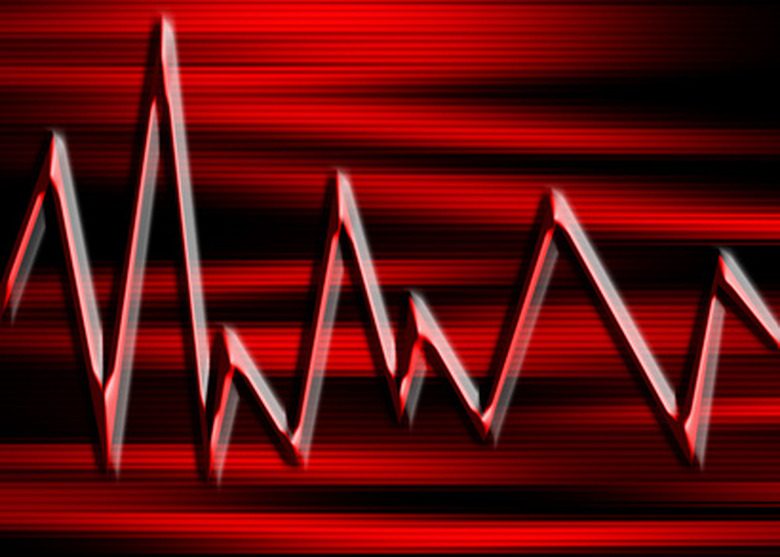How To Calculate Slew Rate
Slew rate, a change in voltage per unit time, is a measure of how fast an electronic circuit will transfer information. The higher the slew rate, the faster electronic information can be transmitted through a circuit. The fastest computer and communication devices are designed with electronic components with the highest slew rates. You can calculate the slew rate of an electronic device easily. From the plot of an electronic waveform, divide the change in voltage by the time it takes to make that change.
1. Obtain Voltage Versus Time Plot
Obtain a voltage versus time plot of an electronic waveform for the electronic component you want to know about. You can ask the component's manufacturer for a data sheet that illustrates the slew rate.
Note the region on the waveform plot where the voltage rises from a minimum voltage level to a maximum voltage level. Write down the highest voltage and the lowest voltage. Look on the vertical axis of the plot to find the corresponding voltage levels. Also write down the time the lowest voltage occurs and the time the highest voltage occurs. Read the times from the horizontal axis on the plot. Use, for this example, a low voltage of 0 Volts occurring at 1 second and a high voltage of 5 Volts occurring at 4 seconds.
2. Calculate the Voltage Change
Calculate the voltage change. Subtract the lowest voltage from the highest voltage. Conclude that for a high voltage of 5 Volts and a low voltage of 0 Volts, the voltage change is 5 Volts, since
\(5-0=5\)
3. Calculate the Time Change
Calculate the time change. Subtract the time at which the lowest value voltage occurs from the time the highest value voltage occurs. Conclude that if a low voltage of 0 Volts occurred at time, 1 second and that a high voltage of 5 Volts occurred at time, 4 seconds, the time change would be 3 seconds, since
\(4-1=3\)
4. Calculate the Slew Rate
Calculate the slew rate. Divide the voltage change by the time change. Conclude that if the voltage change was 5 Volts and the time change was 3 seconds, the slew rate would be 1.66 Volts per second, since
\(\frac{5}{3}=1.66\)
Things Needed
- Voltage Versus Time Plot of Electronic Waveform
- Calculator
Slew Meaning and More About Calculating It
Slew Meaning and More About Calculating It
The slew rate is often used as a measure of how fast an amplifier is or how fast a digital logic circuit will switch from a low voltage state to a high voltage state. In an electronic circuit, such as a digital logic circuit, the time to switch from a low to high voltage state can be as low as a billionths of a second. Because of this, expect to find slew rate specifications that are in the range of a million volts per second to a billion volts per second.
For precise slew rate calculations, electronic designers don't use the very highest and very lowest voltage values. Instead they use a high voltage value that is 90 percent of the highest voltage and a low voltage that is 10 percent of the highest value. The time between the 10 percent and the 90 percent point is often called the rise time or fall time.
Cite This Article
MLA
Stansberry, Mark. "How To Calculate Slew Rate" sciencing.com, https://www.sciencing.com/calculate-slew-rate-6401075/. 15 December 2020.
APA
Stansberry, Mark. (2020, December 15). How To Calculate Slew Rate. sciencing.com. Retrieved from https://www.sciencing.com/calculate-slew-rate-6401075/
Chicago
Stansberry, Mark. How To Calculate Slew Rate last modified March 24, 2022. https://www.sciencing.com/calculate-slew-rate-6401075/
